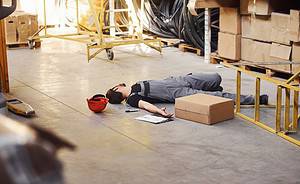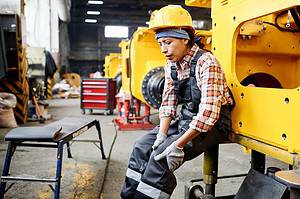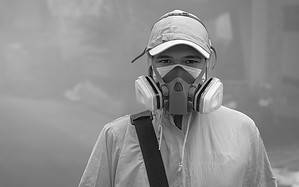The last thing an employer or company management wishes to hear is that an accident occurred at their work premises. One-the-job accidents can cause severe injuries to workers or costly damage to the company’s property.
According to the National Safety Council (NSC), workplace injuries cost the economy approximately $171 billion in 2019.
This amount accounts for the loss of wages and productivity and medical and administrative expenses.
Workplace accidents and resulting injuries can gravely impact a company’s bottom line. So, what can you do if an accident occurs in the workplace?
Companies can implement safety measures to prevent similar catastrophes from happening in the future. An effective incident investigation program can help a company learn from the accident and impose controls.
If you are wondering what to do if an accident occurs in the workplace, this post is for you. Read on to find out what you need to do.
With COVID Rampant, Should the Site be Quarantined?
As an employer, you know that you must protect your workers from work-related injuries and illnesses. One of those illnesses you may not be prepared for is COVID-19.
If an employee tested positive for COVID-29 on the job, should the site of the accident be quarantined?
The answer is yes, the work site has to be quarantined. To minimize safety and legal risks, employers should follow quarantine and isolation guidelines from the U.S Centers for Disease Control and Prevention (CDC).
The following are some of the CDC interventions to implement to protect your workers:
1. Have infected workers stay home from work
If any workers test positive for COVID-19 or show symptoms of the same, instruct them to stay home from work. This way, you can reduce the risk of transmission of the virus.
Also, consider revising policies requiring workers to come to work when sick or exposed to COVID-19.
2. Implement physical distancing in all communal work areas
A primary approach to protecting workers is physically distancing them from unvaccinated and otherwise at-risk workers.
The CDC recommends at least six feet of distance, but this is not a guarantee of safety, particularly in poorly ventilated spaces.

You can limit the number of workers in one place at any time by implementing flexible work hours or remotely delivering services.
3. Provide workers with face masks or other PPE
The CDC recommends that everyone wears a mask in public indoor settings. As an employer, make these face coverings available at no extra cost.
If personal protective equipment (PPE) is necessary to protect at-risk workers from exposure to COVID-19, provide it per relevant OSHA standards. It would help if you also offered PPE by other industry-specific guidelines.
4. Maintain ventilation systems
The COVID-19 virus tends to spread more easily in confined spaces than outdoors.
Refining ventilation is a significant engineering measure that can help lower the accumulation of viral particles in indoor spaces and the risk of virus transmission to workers.

You can improve ventilation by ensuring operational heating, ventilation, and air conditioning (HVAC) systems. Installing air filters with a Minimum Efficiency Reporting Value (MERV) 13 and maximizing natural ventilation in buildings without HVAC systems are also practical alternatives.
5. Perform routine cleaning and disinfection
If someone alleged to have or confirmed to have COVID-19 has been on the work premises within 24 hours, adopt the CDC cleaning and disinfection sanctions.
You may also follow the mandatory OSHA standards requirements for hazard communication and suitable PPE for workers handling cleaning chemicals.
Who Will Investigate the Workplace Accident?
Incident investigations are often conducted by supervisors or company management. But for it to be more effective, OSHA recommends that supervisors work with employees during the investigation process.
In so doing, everyone brings diverse knowledge, thoughts, and insights to the investigation.
Besides, the investigations had better be carried out by individuals familiar with the work site, the concrete work process, and equipment, if any.
When conducting accident investigations in the workplace, the team must look beyond the immediate cause of the accident.
A sheer conclusion that recklessness on the part of the employee or failure to follow specific procedures was the cause of the accident is insufficient.

Making conclusions would mean that you will neither discover the leading cause of the accident nor identify the changes and steps to prevent future accidents.
So, when a problem is recognized, it is crucial to conduct an in-depth examination to know why it happened and why it was not previously identified or addressed.
What Steps Will Prevent Future Accidents?
There were 2.7 million injuries and 4,654 fatalities resulting from workplace accidents in 2020. Many sustained injuries so severe that they rendered them physically unable to work.
However, it should not take life-changing accidents to convince business owners to change workplace culture and prioritize the health and safety of workers.
Follow the tips outlined below for accident prevention in the workplace:
1. Implement Control Measures
When an accident occurs at the workplace, investigate it to know the root cause of the accident.
After identifying the hazard, you can implement control measures to reduce the risk of the same accident happening again.
The CDC hierarchy of controls has several categories of rules that you can use. They include elimination, substitution, engineering controls, administrative controls, and PPE.
2. Provide Safety Training
An untrained worker is a danger not only to themselves but also to their co-workers.
Employers can prevent workplace accidents by offering rigorous training to all new employees, regardless of work experience.

While it will take longer for them to become productive, you will have protected them from harm and yourself from legal liabilities.
Also, consider conducting regular retraining sessions to keep workers up-to-date on policies and procedures.
3. Conduct Regular Risk Assessments
Adopting a risk management operations model can help discover where risk is and work towards eliminating it.
Put another way, do not be reactive as far as workplace accidents are concerned. Instead, seek out measures to avert them in the first place.
Waiting until accidents have happened to recognize your workers’ risks would not be a good idea. Actively find the hazards and alleviate them.
4. Review Your Policies and Procedures
Once per year, or after a workplace accident, review your company’s safety policies and procedures. Do they still apply to the risks your workers face?
If there have been any changes in how workers perform tasks, use new equipment, or relocate the business, the safety personnel should update it.

When the company updates the safety protocols, inform the employees of the changes. You can send company-wide emails to inform them of minor updates but provide updated training for any significant policy or procedural changes.
5. Discourage Shortcuts
Many workplace accidents occur because workers take shorts. This is especially true when workers are accustomed to the task or are in a rush.
For example, a worker can climb without a safety harness to finish a small task because wearing safety gear seems time-consuming. Unfortunately, employees risk minor to severe injuries every time they take a shortcut.
Ensure your employees know that you would rather have them work slower and stay safe.
What Role Does OSHA Play?
In 1970, the federal government established the Occupational Safety and Health (OSH) Act to ensure a safe work environment for all Americans.
This law led to the formation of the Occupational Safety and Health Administration (OSHA); a regulatory agency meant to enforce the OSH law in 1971.
OSHA’s primary role is to ensure businesses provide a safe work environment that is free of hazards and reduce job-related injuries, illnesses, and fatalities.
OSHA accomplishes this goal through three main programs:
1. Compliance and Training
OSHA requires employers to comply with all regulations in the OSH Act, which apply to the kind of business they conduct. Every company must post an OSHA poster providing workers with information about their right to health and safety at work.

OSHA also operates regional compliance offices with professionals helping employers comply with relevant regulations.
When a company has questions on what laws apply to them and the steps to take to comply, they can reach out to OSHA compliance officers near them.
2. Workplace Inspections
OSHA hierarchically performs workplace inspections to identify:
- Imminent danger – OSHA prioritizes situations where workplace accidents are expected to occur in the short run. It takes immediate action to protect workers from harm.
- Fatalities and hospitalization of multiple workers – The next high-priority inspection is situations where a worker dies on the job, or more than three workers have been hospitalized.
- Employee complaints – Third in the order of priority is employee complaints. Generally, all workers have a right to report violations of the OSHA Act to the agency. It is illegal for employers to retaliate against employees for doing so.
- Agency referrals – The next priority is placed on companies referred to OSHA by government agencies. For example, a state agency responsible for environmental management may visit a work site and realize that they are not compliant with OSH regulations. The agency representative can notify OSHA of the violation, triggering an inspection.
- Targeted inspections – The final priority goes to industries and companies targeted based on OSHA criteria. For example, OSHA may target companies operating in sectors with a higher risk of injury, such as those working with hazardous chemicals.
- Follow-up – OSHA conducts follow-up inspections in work sites that require subsequent visits after the initial visit. A follow-up is essential for organizations that violated OSH Act regulations during an inspection.
3. Enforcement
The third OSHA responsibility is enforcing OSH Act regulations.
OSHA does this by imposing fines on companies found to violate OSHA requirements. Minor violations may not result in penalties, but major ones can cost a company up to $70,000 per violation.
Moreover, the Enhanced Enforcement Program (EEP) targets employers guilty of putting their workers at risk through deliberate and recurrent breaches of OSHA regulations.

Companies with OSHA violations at the EEP level are subjected to routine follow-up inspections and massive fines.
Overall, these actions aim to force employers with grave safety issues in the workplace to remain compliant with OSHA regulations.
Bottom Line
As an employer, you want to demonstrate that you have done everything possible to promote the health and safety of the people working for you.
Turning a blind eye to safety procedures will not only be dangerous for your employees but can also affect the future success of your business.
Taking the proper precautions will help you significantly reduce the risk of accidents and injury in the workplace. Implementation of these practices will also make your business easier to insure.

